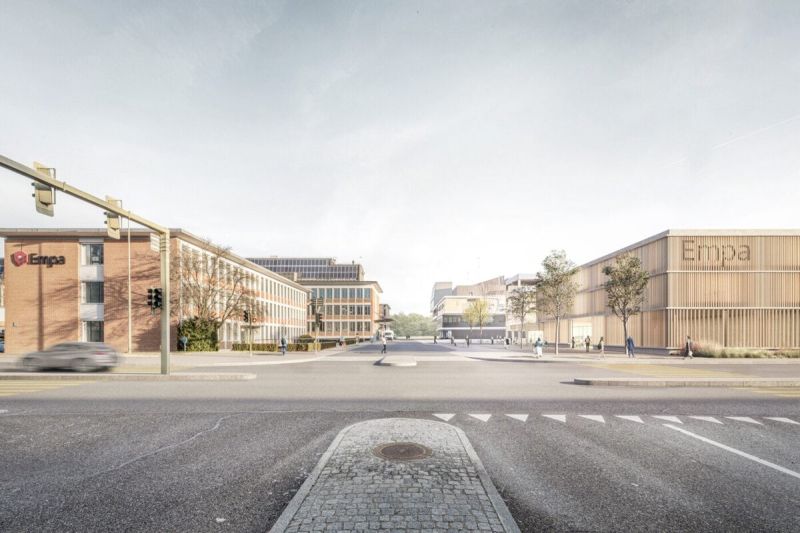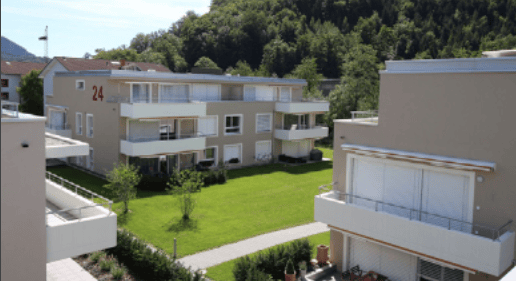Dübendorf: Sustainable new buildings on the Empa site
The expansion of the Empa and Eawag campus in Dübendorf is nearing completion. With the new buildings, ideas for reducing greenhouse gases and the circular economy have been implemented, among other things.

The Swiss Federal Laboratories for Materials Science and Technology and the ETH Domain's aquatic research institute Eawag are expanding the campus in Dübendorf (ZH) with the "co-operate" project. Empa and Eawag have announced that the new buildings will demonstrate how energy can be saved or recovered and how raw materials can be extracted for later use.
Among other things, a three-storey parking garage was built using a hybrid construction method: The ceilings of the "wood-concrete parking garage" consist of spruce beams and slabs with a concrete coating - according to the construction company lmplenia, this allowed the thickness of the concrete layers to be reduced to around a third. A good 9,300 square meters of concrete ribbed ceilings were replaced by wooden beam ceilings. The parking garage was also planned as a modular structure made of removable prefabricated parts. This means that parts of the building can be converted into workshops, for example.
Innovative concepts are also used in the large laboratory building at the center of "co-operate": special toilets have been installed there that separate human urine from so-called black water from faeces, flushing water and toilet paper. Eawag has developed a process to turn urine into fertilizer for agriculture. An Eawag spin-off markets the fertilizer under the name Aurin, which has been approved for use since 2018.
Empa and Eawag are also relying on photovoltaic installations for the campus extension in order to increase their own electricity production, and recycled asphalt was used on a 14,000 square meter area. Where possible, asphalt was avoided and sealed surfaces such as Ludwig-Tetmajer-Strasse were unsealed. Heat-resistant plants and trees were selected for the planting. (ah)









